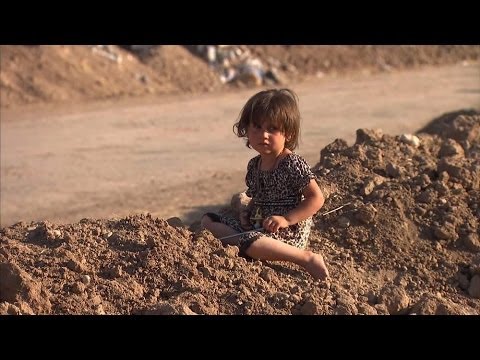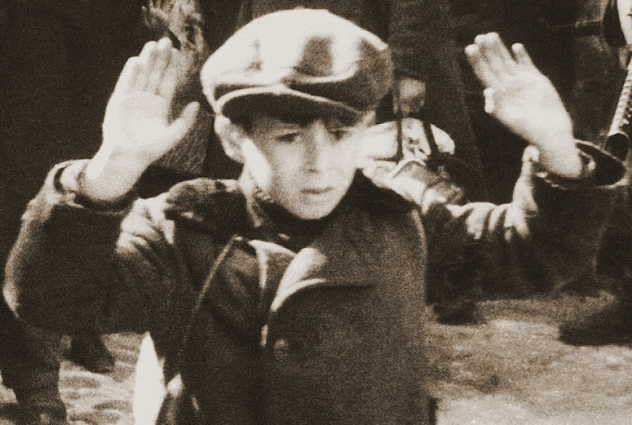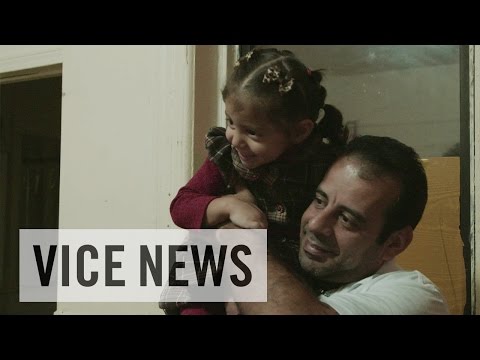Going solely by media reaction, it can seem like this current refugee crisis is unprecedented. In reality, it’s simply one in a long number of waves that have come to shape the modern United States. While some writers claim that reactions to the Syrian influx show that Americans have always been hostile to refugees, the truth is far more nuanced. The US has plenty of moments in its past to be ashamed of when it comes to treatment of displaced persons. It also has just as many to be deeply proud of. What’s clear is that each new crisis can bring out not only the worst in people, but also the best. NOTE: This article examines refugees and United States. For our article on refugees and Europe, click here.
10 Saving 20,000 Muslims
The elephant in the room when discussing refugees today is Islam. Liberals argue that the US discriminates against Muslim refugees. Conservatives argue that the rise of the Islamic State means that Muslims potentially pose an unprecedented threat. Believe it or not, the US hasn’t always had such a divided history with Islamic refugees. In 1999, its government moved heaven and Earth to save the lives of 20,000 persecuted Muslims. The backdrop to this effort was the war in Kosovo. Serbian paramilitaries were massacring villagers, NATO was raining missiles on civilian populations in Serbia, and 600,000 Kosovars fled the country. Nearly all of them were ethnic Albanian Muslims. Faced with this tide of humanity, the US pulled out all stops to get the fleeing Kosovars to safety. What’s remarkable now is how quickly those 20,000 were saved. Normal checks were discarded, and the refugee application process cranked to warp factor five. There was also strong bipartisan support for the project. Republicans testified in Congress in support of the refugees. A national poll conducted just before the first plane full of Muslims landed showed that 59 percent of Americans thought it was the right thing to do, and a further 22 percent wanted to do even more.
9 Turning Away The St. Louis
Not all refugee waves have been treated so well. The fate of the St. Louis may be one of the low points of America’s long relationship with the oppressed. In 1939, 935 German Jews—including concentration camp survivors—set sail from Hamburg, fleeing the oncoming Nazi storm for the safety of the Americas. The passengers had all arranged documents that would let them into Cuba, from where they would apply for visas to enter the US. At least, that was the plan. At the last moment, Cuba changed its policies on letting Jews in, requiring them to jump through hoops and secure additional documents. By the time the St. Louis set sail, only 26 had managed to acquire the new visas. They were the lucky ones. The remaining 909 were denied entry to Cuba. After weeks of being stuck offshore, the St. Louis turned toward Miami, but the US refused to let them dock. For a few days, the ship was stuck circling at sea. Finally, negotiations to let the fleeing Jews into either the US or Cuba fell apart. The St. Louis sailed back to Europe. While some passengers managed to get asylum in the UK, most were sent to the Netherlands, France, or Belgium. When these countries were overrun by the Nazis, the St. Louis passengers were rounded up. The Holocaust would ultimately claim 254 of them.
8 Positive Actions In Thailand
Thailand is one of Southeast Asia’s refugee hot spots. Following the Vietnam War, the country was so overwhelmed with “boat people” that it closed its borders. Also, Cambodians fled there from Pol Pot’s reign. Refugees from Myanmar have been heading there for 20 years. As a result, Thailand is extremely reluctant to be seen as a refugee “paradise.” It keeps those who come in squalid camps, frequently deports people back to autocratic regimes looking to torture them, and generally makes life hell for those fleeing war or persecution. This is bad news for all local refugees, particularly those from Myanmar. For a long time, the country was the biggest basket case in Asia, a place of child soldiers, rape squads, and torture. The fact that many of these refugees weren’t ejected from Thailand is due to the US. Although you might not know it from current rhetoric, the US is one of the most proactive countries in the world when it comes to refugee rights. The US government has consistently pressured Thailand to treat its asylum-seekers better. In 2007, it decided to lead by example. That year, Washington gave Myanmar citizens in Thailand third-country resettlement rights inside the US. As a result, some 104,000 refugees were brought to the US over the next half-decade. It was an incredible amount, made all the more incredible because the government never sought much publicity over it. Unlike the Kosovars or Syria’s refugees, the arrival of enough Burmese people to populate a small town was dealt with quietly and efficiently.
7 The US And The UNHCR
The United Nations High Commission for Refugees (UNHCR) has one of the toughest jobs on Earth. Their task is to remove asylum seekers from festering camps and find them a new life in a third country, where they’ll ideally contribute to the local economy. Globally, the agency processes applications from roughly 14 million people, resettling 73,000 every year. It couldn’t do this without the help of the United States. Since the end of World War II, the US has historically led the world in resettling refugees. While countries that border war zones, such as Turkey, may currently be home to more displaced persons, the US voluntarily takes more asylum-seekers than anywhere else on Earth. This is important, as the number of countries willing to receive refugees is extremely small. The UNHCR has only 28 countries that it can call on in times of crisis, or about 14 percent of all world states. Many of them don’t pull their weight. Japan, for example, took only six refugees in 2013. As a result, the US is often seen as the moral guiding light where refugees are concerned. Fairly or unfairly, it is the nation that all other nations look to in times of crisis.
6 Washington And The Iraqi Refugees
Despite its position as a world leader in refugee resettlement, the actions of the US haven’t always been blemish-free. One of the most shameful moments in recent history involved Iraqi citizens who were part of the Direct Access program. Set up for Iraqis who worked for the US military or US-based NGOs, media outlets, or companies during the occupation of Iraq, the program has about 58,000 people on its rosters. Although many are Muslims, there are also Yazidis and members of other minorities. All are targets for ISIS because they helped to advance US interests. Over the last few years, the program’s slow progress in getting Iraqis to the US has been widely criticized. In 2015, it nearly collapsed altogether. A House bill passed 289–137 requiring three top government officials to personally vet every single Iraqi refugee arriving in America. It essentially closed the door to anyone from the country, regardless of whether they were fleeing ISIS or had helped the US after the fall of Saddam Hussein. The New Yorker called the bill a “betrayal” and accused it of “advancing the cause of irrationality and bigotry.” In a historical context, the bill seems to suggest that the US is in the middle of a refugee backlash, such as those that accompanied the Jews in World War II and the Irish during the Great Famine. While these sorts of things tend to be cyclical, it could be a while yet before we see anything like the generosity extended to Kosovar Muslims or Burmese refugees again.
5 Refugee Conspiracy Theories
The last few months have seen an explosion of conspiracy theories relating to refugees, from the government secretly relocating hundreds of thousands of Muslims to Oklahoma, to tales of Syrians bringing a flesh-eating virus to the States. Such conspiracy theories are hardly new. In fact, they pale in comparison to some that have historically swept the US. The most well-known example is probably the theories surrounding Irish economic refugees escaping the devastating famine of the 1840s. As many (if not all) of those arriving were Catholics, it gave rise to a Pope-based panic. The Irish were said to be undercover Papists coming over to undermine democracy and destroy the US. Catholicism itself was argued to be a political movement rather than a religion, undeserving of First Amendment protections. Other groups were subject of popular theories, too—of varying levels of plausibility. Those escaping the European revolutions of 1848 were suspected of being atheists and socialists, particularly by Southerners, who thought that they intended to free the slaves. (In some cases, this was probably true.) Russians fleeing the Bolshevik Revolution in 1917 were thought to be Communist spies. Jews escaping the Nazis were considered potential Nazi saboteurs. Such conspiracy theories about the unknown are probably just a fact of life. At the very least, they prove that old adage that there is nothing new under the Sun.
4 Humanitarian Instincts In Bosnia
The disintegration of Yugoslavia in the early 1990s was that generation’s Syria. A complex mess of ethnic and religious strife that tore the country apart and created millions of refugees, it was the most violent conflict in Europe since World War II. As late as 2013, 330,000 former Yugoslavians were still classified as refugees. Yet the responses to the crisis were remarkably different to those seen today. In the mid-1990s, the US made a conscious decision to emphasize humanitarian needs over military solutions. At the time, the war in Bosnia was in full swing, with all its attendant ethnic cleansing and genocidal massacres. Washington pulled out the stops to bring in unprecedented numbers of Bosnian Muslims (known as Bosniaks) and resettle them. The US issued 131,000 visas, with 9,000 Bosnians landing in Chicago alone. It was far from plain sailing. By the early 2000s, many had begun to worry about a lost generation of alienated Bosnian youth, particularly after a Bosniak teenager went on a tragic shooting rampage. The shooter managed to kill five people. Others got involved in drugs or gangs. However, it was far from a one-sided story. In St. Louis, the Bosnian influx completely revitalized a crumbling, crime-ridden neighborhood, boosting the local economy. An analysis in 2015 found that most of St. Louis’s Bosnian refugees made over $80,000 annually. Many went on to become business owners and pillars of the community.
3 Washington And The Vietnamese
The actions of Washington following the South Vietnamese exodus are interesting because they went directly against public opinion. While the horrors of Bosnia and Kosovo convinced the public that refugees should be welcomed, people were steadfastly against the arrival of Vietnamese following the fall of Saigon. A Gallup poll at the time showed that only 36 percent of Americans thought that Vietnamese refugees should be brought over. Many feared that they would steal jobs, burden taxpayers, or work as secret Communist spies. Despite all this, Washington went ahead and let them in anyway. In 1975 alone, around 120,000 Vietnamese were allowed to seek asylum in the US. When a dangerous backlog began to grow as more and more “boat people” arrived in Guam, background checks were dropped, and $450 million was allocated to resettlement efforts. While many Americans protested the influx, many others worked with the refugees. One small town in Nebraska sponsored two fleeing doctors because they were desperate to have local medical professionals. By 1979, it was clear Washington’s gamble had paid off. The Vietnamese were largely well-integrated, with very few requiring government handouts and average earnings among the community being relatively high. For a long time, it was considered one of the greatest success stories in refugee history.
2 The Fate Of Europe’s Jewish Children
We mentioned earlier that the US became the world’s refugee capital in the years following World War II. There was a very good reason for that. During the early days of anti-Jewish pogroms, US refugee policy led to some very dark places. In February 1939, Congress was asked to approve a bipartisan bill allowing 20,000 German Jewish children to come to the US immediately. Although the public was firmly against the proposal, Washington was broadly for it. However, the judiciary committees stood in the way of the bill actually being voted on. Filled with Southern and Western anti-refugee representatives, they went out of their way to sink the bill. The wife of the US immigration commissioner publicly testified that, “20,000 charming children would all too soon grow into 20,000 ugly adults.” Southerners boasted that they would kill the bill before they even read it. It was doomed to fail. Such measures impacted thousands upon thousands of Jewish families. Among them was the family of Anne Frank. In 1941, her father, Otto, desperately tried to get the family to the US. Their visas were denied due to a new law that equated being a Jewish refugee with family in Nazi-controlled territory to being a Nazi spy. Anne Frank would go on to die in the Bergen-Belsen concentration camp. It was only after the horrors of the Holocaust came to light that America’s attitude toward refugees changed. Once deeply unwelcoming, it became the most welcoming country of all. For the rest of the 20th century, half of all permanently resettled refugees made their homes in the United States.
1 Today’s Refugees
Currently, there are over three million refugees from Syria, with another 6.5 million considered internally displaced. This means that more people are fleeing Syria than any other country on Earth, and the nation has overtaken even Colombia in terms of internal refugees. Across the globe, reactions have ranged from welcome to outright hostility. Germany famously threw open its doors to Syrians in September 2015, and Turkey currently houses around two million. Others, like Poland and Hungary, have slammed their doors shut, with anti-refugee feelings now running high. And then there’s the US. The Obama administration currently plans to accept approximately 10,000 Syrians fleeing ISIS and Assad’s forces. Liberals claim that this figure is far too low. Conservatives say it is far too high. Certain states are mounting legal challenges to keep refugees out, while others want to let them in. How this crisis will be seen in decades to come, or what twists it will take, is anyone’s guess. It could be that this will be remembered as the moment when the US slammed its doors for good. On the other hand, it could be a storm in teacup that leaves little trace on history. The only thing we can say for sure is that, as this list shows, political tides are always changing. Today, the US might refuse 20,000 Jewish children, only to let 20,000 Muslims in tomorrow. Nothing is certain. We can only hope that this goes down in history as another example of the US trying its hardest to do the right thing, even in difficult circumstances.























